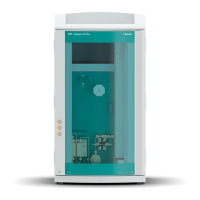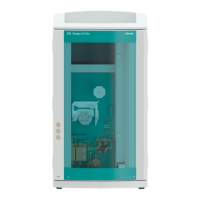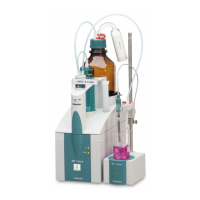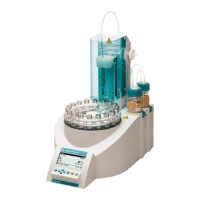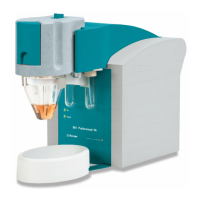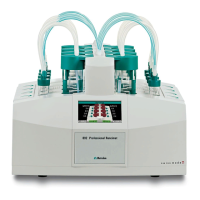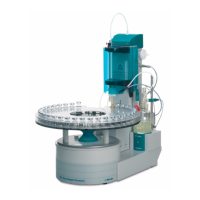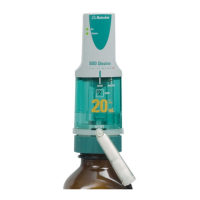■■■■■■■■■■■■■■■■■■■■■■
3 Installation
883 Basic IC plus
■■■■■■■■
15
■ PEEK capillaries with an inner diameter of 0.25 mm (6.1831.010) for
the entire high-pressure section.
■ PEEK capillaries with an inner diameter of 0.5 mm (6.1831.180) for the
sample path.
PTFE capillaries
(poly(tetrafluoroethy-
lene))
PTFE capillaries are transparent and enable visual tracing of the liquids to
be pumped. They are chemically inert, flexible and temperature-resistant
up to 80 °C. They can be readily cut down to the desired length with the
capillary cutter (6.2621.080).
Use:
PTFE capillaries (6.1803.0x0) are used for the low-pressure section.
■ PTFE capillaries with an inner diameter of 0.5 mm for sample process-
ing and for the transfer of rinsing solutions (they are not necessarily
included in the scope of delivery of the instrument).
Capillary connections
NOTICE
Sprays of chemicals caused by capillaries slipping out
If you work with an increased system pressure (> 15 MPa), capillaries
may slip out of the pressure screws. This can lead to sprays of chemi-
cals.
To avoid this, we recommend
■ degreasing the ends of the capillaries before installing them.
Dampen a cloth with acetone and wipe off the ends of the capilla-
ries before connecting them with the pressure screws.
■ tightening the pressure screws firmly using a wrench (6.2739.000).
In order to achieve optimum analysis results, capillary connections in an IC
system must be absolutely tight and free of dead volume. Dead volume
occurs if two capillary ends connected to each other do not fit exactly,
thus allowing liquid to escape. There are two possible causes for this:
■ The capillary ends do not have exactly flat edges.
■ The two capillary ends do not completely meet.
One prerequisite for dead-volume-free capillary connection is that both
capillary ends are cut exactly flat. Therefore we recommend cutting PEEK
capillaries only with a capillary cutter (6.2621.080).
Also see: Cutting capillaries video on the Internet http://ic-
help.metrohm.com.
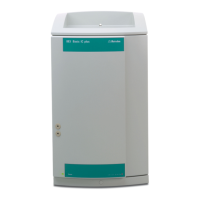
